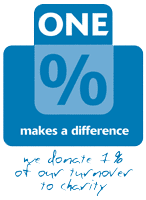How Gift Aid Works
Newsletter issue - May 2012.
There has been a lot of coverage in the press recently about tax relief for charitable donations.
When you make a donation to a charity or to a community amateur sports club you can make a declaration that your donation is made under Gift Aid. This declaration can be made in writing, online or over the phone, but in all cases it should include your name and address details, the name of the recipient charity, and a statement that you have paid sufficient UK tax to cover the 20% tax the charity will reclaim from the Tax Office.
Say you make a donation of £1,000 to a charity, and make a Gift Aid declaration for that gift. This results in a gift of £1,250 in the charity's hands as they can reclaim basic rate tax (20%) on the gross equivalent of the gift. In this example, 20/80 x £1,000 = £250.
You have to declare with your gift aid declaration that you have paid at least £250 in UK income tax or capital gains tax in the tax year in which you make the gift.
If you pay tax at 40% or 50%, the thresholds at which those higher rates are imposed are extended by the gross value of your gift, which gives you additional tax relief for your gift. For example, the 40% threshold is currently £34,370, so if you make donations under gift aid that total £1,000, these are treated as gross gifts of £1,250. Your 40% threshold is extended to £35,620, saving you 20% tax on £1,250 = £250. So overall it would have cost you £750 for the charity to receive £1,250.
It is not possible to completely eliminate your tax bill by making donations under gift aid. Such gifts would only reduce your tax bill to 20%.









